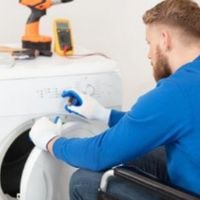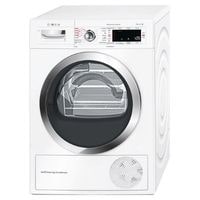Bosch Dryer Not Heating. Is your dryer not heating up? Common reasons for an electric or gas dryer, not heating are if your circuit breaker has tripped, if there is any possible blockage to the vents, or if there is no gas flowing into your machine.
Other probable reasons include a faulty thermal fuse and a broken heating element. If you follow the steps listed here, you may be able to use this guide and help yourself to perhaps solve what is wrong with your dryer’s heating element on your own.
Bosch Dryer Not Heating
A few problems with Bosch dryers when they do not heat are discussed here.
Overloaded Dryer
Modern dryers provide much greater capacity than the older models, but even those have their limits.
Packing clothes into every last corner of your appliance can cause all sorts of damage.
You can’t overstuff your dryer you’ll damage the machine by putting too much weight on it.
Thermal Fuse Blown
Thermal fuses, which are usually located inside the drying unit of modern clothes dryers, provide a level of safety. If the temperature gets too hot, it will fail, preventing fires and other problems like turning on without heating up or not working.
A multimeter can be used to test if your thermal fuse is intact. Test the leads for continuity with the multimeter inside the dryer cabinet. Replace this part if none is found.
Remember that a broken thermal fuse is usually a sign of restricted airflow, so check for that as well if that is the case.
Lint Screens Are Dirty
As mentioned above, if your dryer is not heating properly, one possible reason could be due to lint buildups. The best way to help prevent this from happening is by proactively cleaning out the lint screen after every load.
Simply detach it, hold it over a trash can, and wipe the plugged-up lint with a clean piece of paper towel or perhaps even your hand.
You may want to make sure you clean out any leftover debris because if there’s too much of it clogging up your machine drying time will take longer than usual and this could affect its energy performance.
Solenoids For Gas Valves
Dryers use gas valves solenoids as part of the ignition system. If a gas valve fails to open, the dryer won’t heat. Gas valves have a solenoid that opens or closes the gas flow into the burner.
A faulty solenoid prevents gas from reaching the burner, leading to no heat in your dryer. Because of this, you need to determine if one or more of your gas valves has failed.
One indication is if there is a power surge and the igniter glows but does not ignite the gas. In such cases, it’s safe to assume that one of your valves is not functioning correctly due to a solenoid failure and should be replaced immediately.
Issue With Flame Sensor
The flame sensor in a gas dryer detects heat emitted by the flame. If the dryer’s flame sensor isn’t functioning properly, it may not heat up or may shut off while drying clothes.
Before checking the flame sensor, first, check to make sure that a faulty igniter or thermal fuse isn’t causing the issues if one of these parts is burned out, it might appear to be a problem with the flame sensor.
To determine if the flame sensor is broken and requires replacement, use a multimeter to check for continuity at room temperature; if the specific part doesn’t have continuity at room temperature, replace it.
Thermostat With High Limit
The high-limit thermostat monitors the dryer temperature and shuts off the burner if the dryer overheats. If your dryer is operating but it is not getting hot, then it’s possible that your high-limit thermostat may be malfunctioning.
However, this is not very common. Before replacing the high-limit thermostat, it’s important to check all of the more commonly defective parts such as fuses and flame sensors first.
Most manufacturers recommend testing the thermostat by using a continuity tester before buying a brand new one because in some rare cases, it can turn out that there isn’t an actual problem with your heater after all.
Timer Fault
The timer might be broken if the dryer doesn’t heat. However, this is never the case. Before replacing your timer with a new one, take a moment to check all of the other components that are typically prone to problems during operation.
Check your timer with a multimeter and consult the wiring diagram if all the other parts are in working order. If the timer has gone bad and needs replacing.
Related Guides
